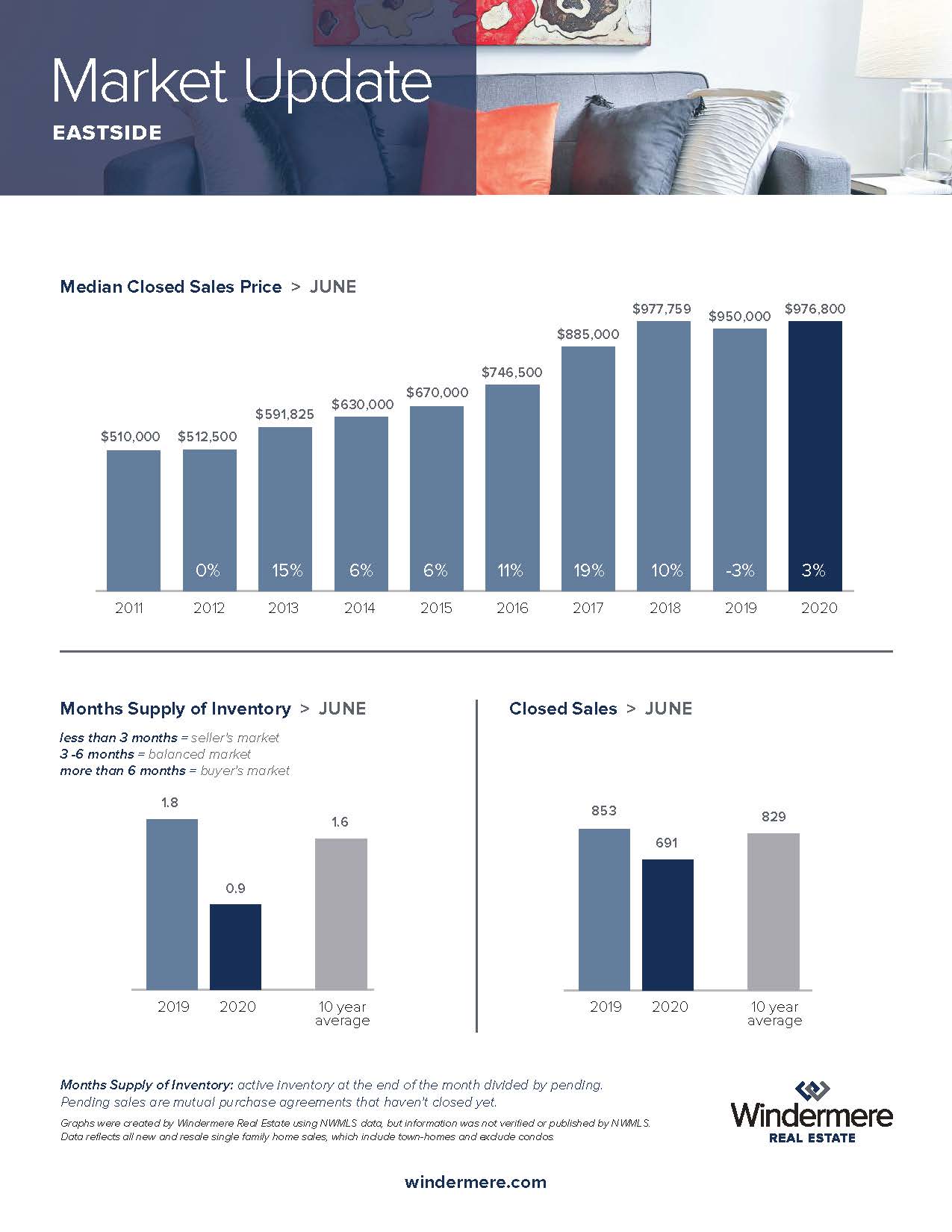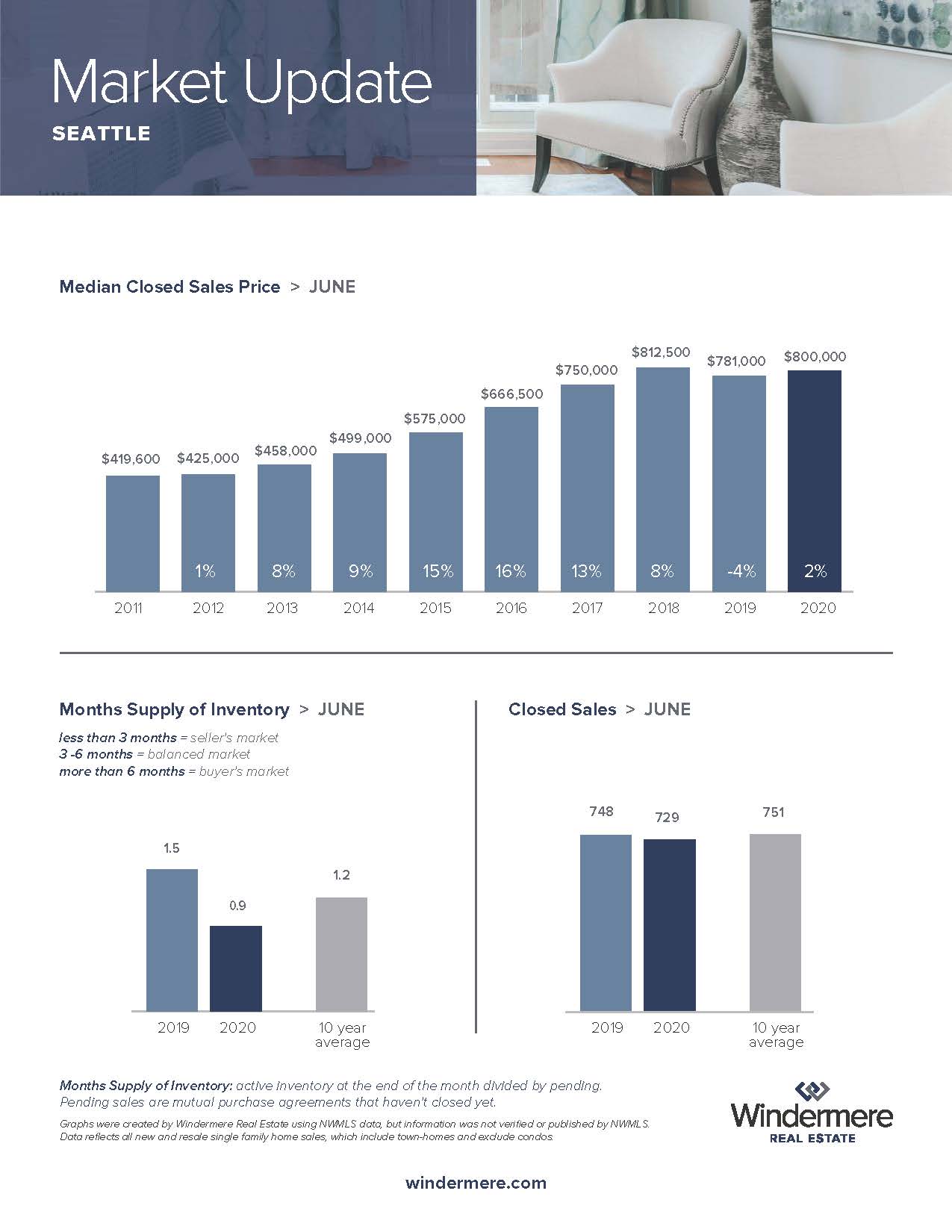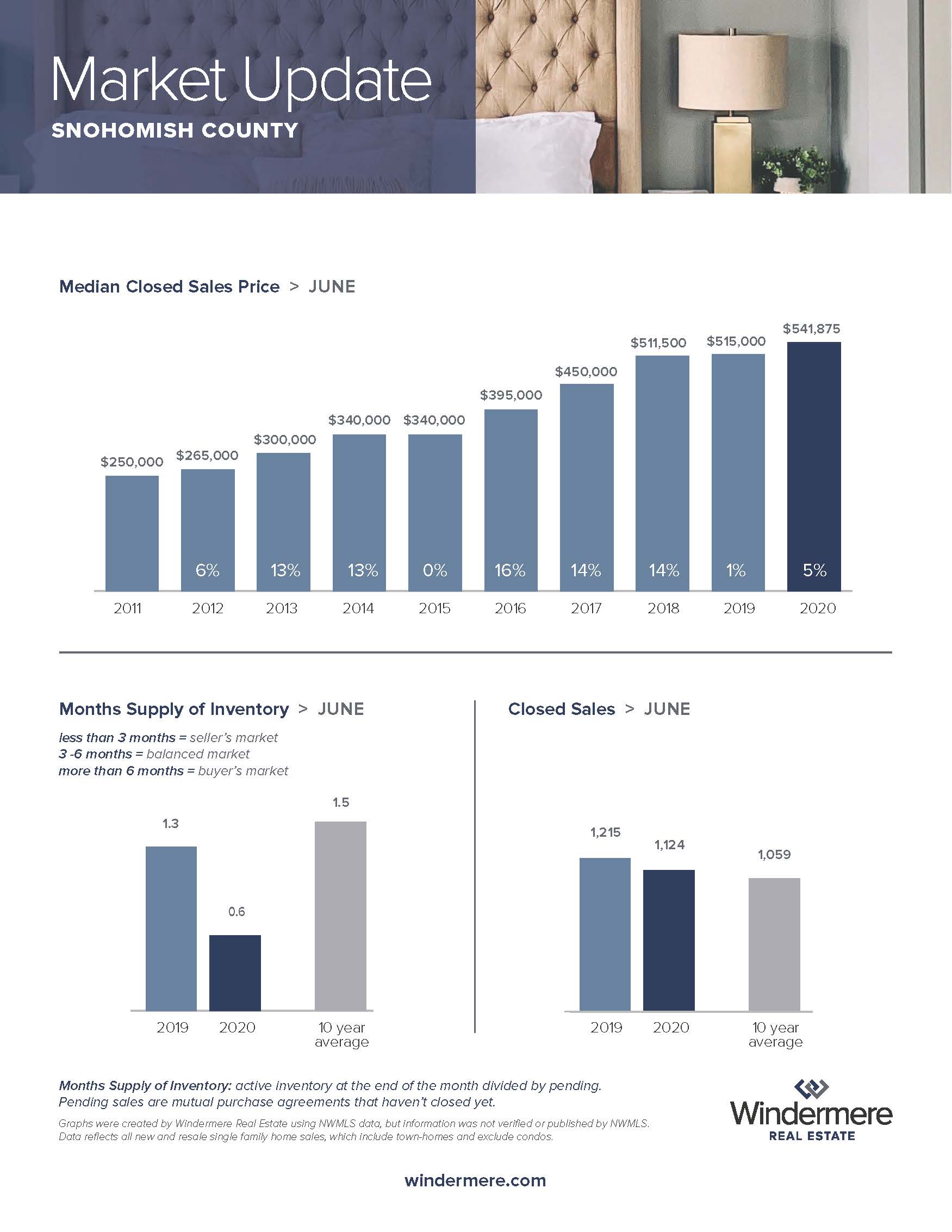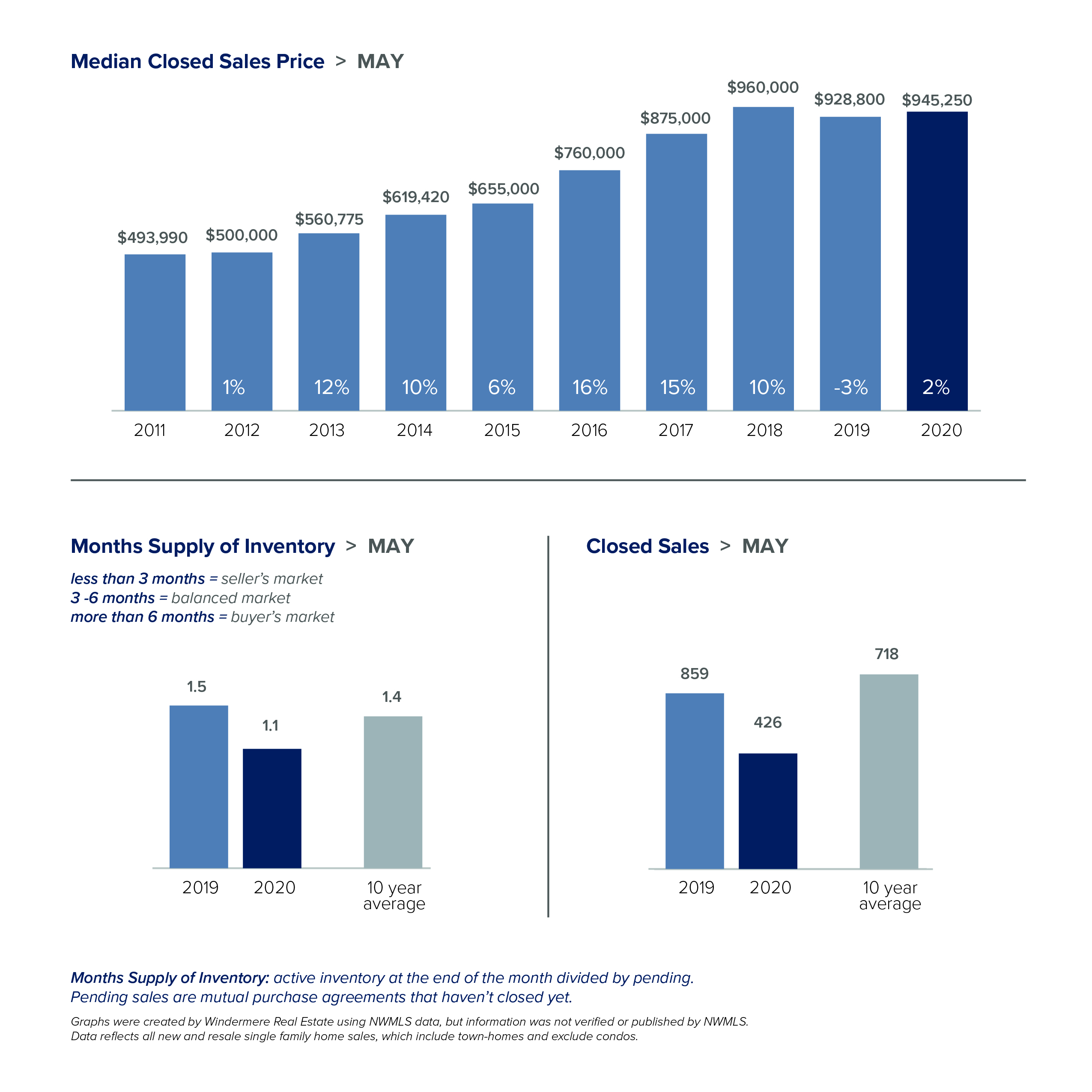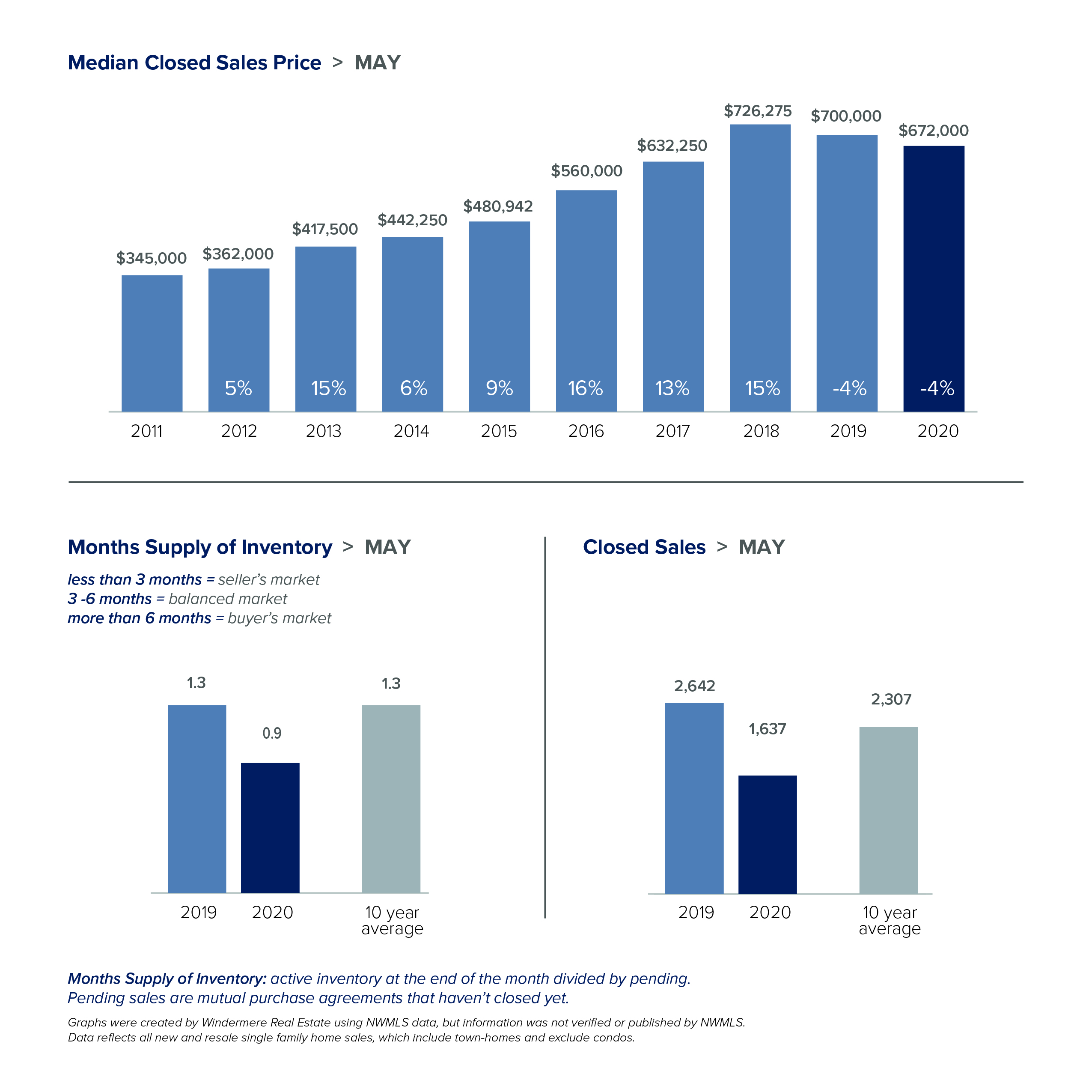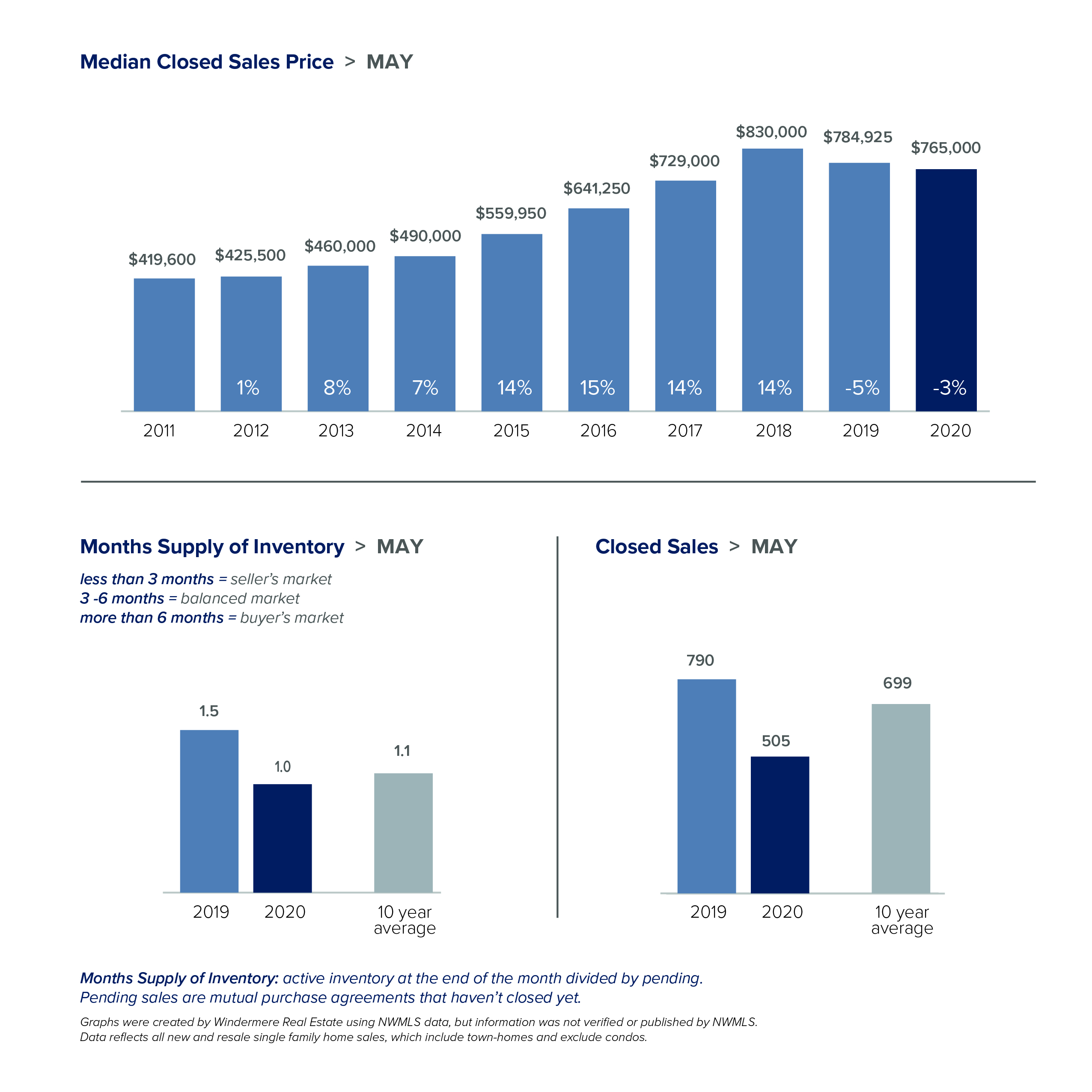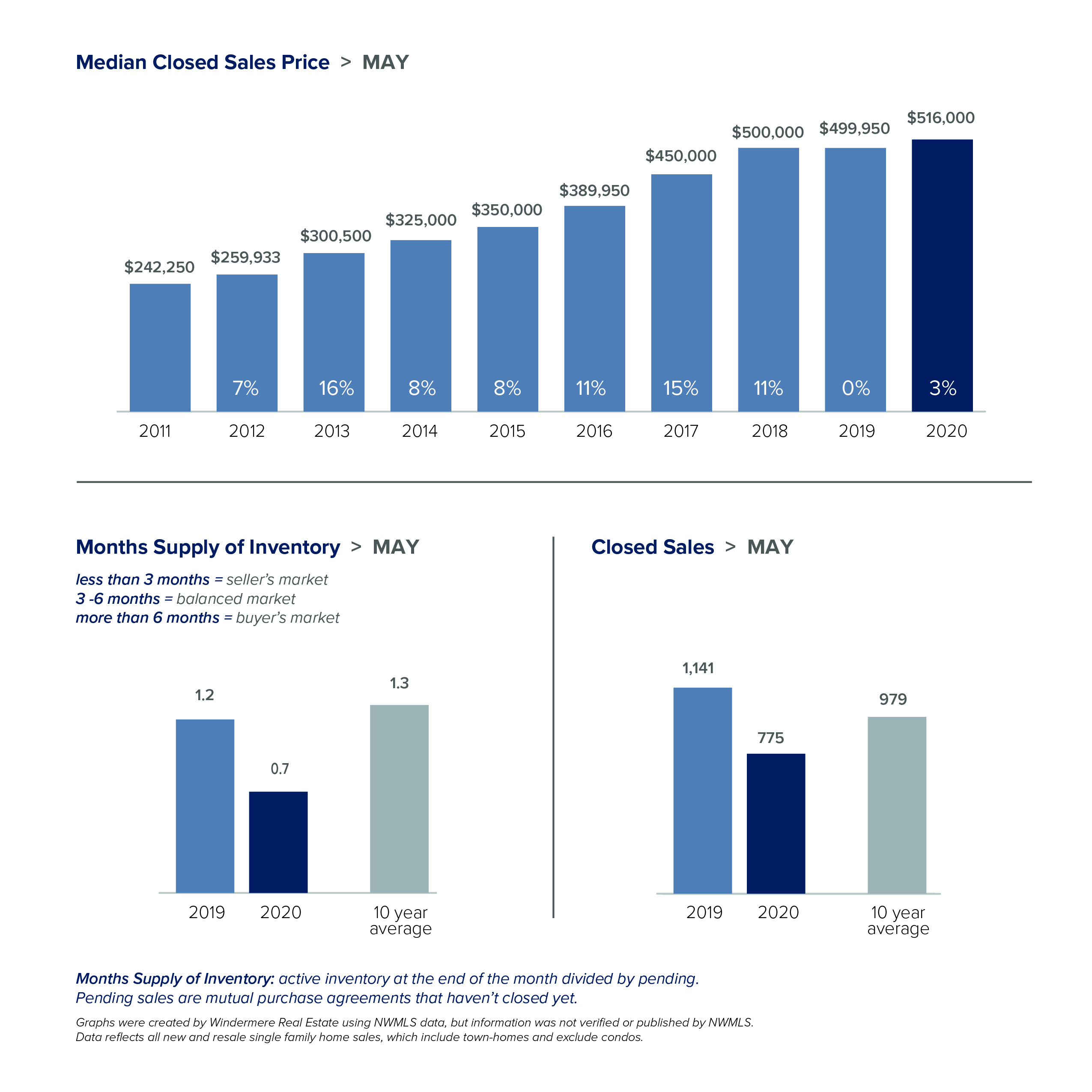A Remarkable Recovery for the Housing Market


For months now the vast majority of Americans have been asking the same question: When will the economy turn around? Many experts have been saying the housing market will lead the way to a recovery, and today we’re seeing signs of that coming to light. With record-low mortgage rates driving high demand from potential buyers, homes are being purchased at an accelerating pace, and it’s keeping the housing market and the economy moving.
Here’s a look at what a few of the experts have to say about today’s astonishing recovery. In more than one instance, it’s being noted as truly remarkable.
Ali Wolf, Chief Economist, Meyers Research
“The housing recovery has been nothing short of remarkable…The expectation was that housing would be crushed. It was—for about two months—and then it came roaring back.”
“Recent home purchase measures have continued to show remarkable strength, leading us to revise upward our home sales forecast, particularly over the third quarter. Similarly, we bumped up our expectations for home price growth and purchase mortgage originations.”
Javier Vivas, Director of Economic Research for realtor.com
“All-time low mortgage rates and easing job losses have boosted buyer confidence back to pre-pandemic levels.”
James Knightley, Chief International Economist, ING
“At face value this is remarkable given the scale of joblessness in the economy and the ongoing uncertainty relating to the path of Covid-19…The outlook for housing transactions, construction activity and employment in the sector is looking much better than what looked possible just a couple of months ago.”
Bottom Line
The strength of the housing market is a bright spark in the economy and leading the way to what is truly being called a remarkable recovery throughout this country. If you’re thinking of buying or selling a home, maybe this is your year to make a move after all.
Local Market Update – July 2020


While our lives are very different than they were a year ago, the local real estate market has recovered to 2019 levels. Record low interest rates are helping spur demand. Sales were up, home prices increased and multiple offers were common.
- The number of pending sales, a measure of current demand, was higher in June than for the same period a year ago.
- The supply of homes on the market remains very low, with just a month of available inventory. When inventory is this low, quick sales over full price are common. That was the case in June when about 40% of homes sold for more than the asking price.
- Home prices in King County rose 4% over a year ago. Snohomish County home prices increased 5%.
- More sellers put their homes on the market. While total inventory remains low, the number of new listings in June was similar to the same time last year.
The monthly statistics below are based on closed sales. Since closing generally takes 30 days, the statistics for June are mostly reflective of sales in May. If you are interested in more information, every Monday Windermere Chief Economist Matthew Gardner provides an update regarding the impact of COVID-19 on the US economy and housing market. You can get Matthew’s latest update here.
EASTSIDE
KING COUNTY
SEATTLE
SNOHOMISH COUNTY
VIEW FULL SNOHOMISH COUNTY REPORT
This post originally appeared on GetTheWReport.com
Local Market Update – June 2020


As we move to the next phase of reopening, life feels like it’s slowly inching back towards normal. The same is true in real estate. Statistics on home sales in May provided the first true picture of the effects of COVID-19. Those reports confirmed the incredible strength and stability of the local real estate market.
- The Stay Home order, as expected, continued to impact the number of sales. However, the market is starting to move its way towards more normal activity. Pending sales, a measure of current demand, have risen every week since April.
- The slight drop in median closed sale price is a result of a proportionately larger number of lower priced homes selling than is normal. It should not be interpreted as a decrease in individual home value.
- There were significantly fewer homes for sale in May than the same time last year. With less than a month of available inventory, competition among buyers was intense. Bidding wars and all-cash offers were common.
The monthly statistics below are based on closed sales. Since closing generally takes 30 days, the statistics for May are mostly reflective of sales in April. If you are interested in more information, every Monday Windermere Chief Economist Matthew Gardner provides an update regarding the impact of COVID-19 on the US economy and housing market. You can get Matthew’s latest update here. As we adapt to new phases of reopening, know that the safety of everyone remains our top priority.
EASTSIDE
KING COUNTY
SEATTLE
SNOHOMISH COUNTY
VIEW FULL SNOHOMISH COUNTY REPORT
This post originally appeared on GetTheWReport.com
Seattle Poised for Faster Recovery than Many Other Cities


It may feel like a tired refrain after nearly three months of quarantine, but it remains true: it’s still too early to truly tell the toll COVID-19 will take on our economy — both locally and nationally — until we are able to fully reopen and jumpstart area businesses.
Thanks to our diversified economy, strong tech sector and attractive, startup-friendly environment, the Seattle area is well-positioned for and capable of a nimble recovery.
Several recent studies analyzing our housing market, population density, and educational attainment (and jobs that require higher education) indicate that Seattle is primed for a recovery that may be quicker and shorter than other major metropolitan areas across the country.
ATTOM Data Solutions, a provider of real estate and property data, put together a special report comparing regions across the country and identifying the housing markets more and less vulnerable to COVID-19 impacts. Their research puts King County within the 50 least at-risk counties. Furthermore, their data shows the West Coast as a whole to be incredibly resilient, with only one West Coast county (in California) appearing in the top 50 most vulnerable markets.
Looking at population density and education, Moody’s Analytics assessed the 100 top metro areas in the country and identified the U.S. cities in the best and worst positions for post-pandemic recovery. Their research notes that the cities best prepared to bounce back have low population densities and high levels of educational attainment. Seattle ranked in the top five metros poised for a quick recovery.
While the recent economic contraction has been profound and carried many unseen ramifications, our region’s tech sector has remained strong. Dominating much of our local economy, tech’s presence here may help buffer our area’s economy from worse dips taking place elsewhere.
It is true that some sectors of our regional economy — particularly hospitality (restaurants and bars), leisure (hotels), tourism and travel — have been hit harder. Those businesses and employees feel the impacts more strongly and may experience a harder and more drawn-out recovery. The direct hits to these sectors — with shuttered businesses and job losses — will resonate through the economy at large. As noted by Windermere Chief Economist Matthew Gardner in a recent “Mondays with Matthew” post looking at how COVID-19 has affected employment, it’s likely that many workers in these sectors are renters, so their misfortunes are likely to impact the region’s rental market. As businesses are forced to close, many may struggle to find new employment until the economy is open and fully operational again.
Loss of tax revenue from the retail, hospitality and tourism sectors (especially from cruise ships, many of which will not be docking in Seattle for the foreseeable future), is already impacting state and local budgets, potentially causing painful future spending cuts over the next few years, as noted in The Seattle Times.
While our economy — city, state, and national — has shrunk dramatically in the second quarter of this year, economists still anticipate recovery beginning as soon as businesses reopen, and stay-at-home orders are lifted. Gains will advance slowly, but will continually increase through the remainder of the year. As Matthew Gardner predicts, the second half of 2020 should be significantly better than the first.
This post originally appeared on GettheWReport.com
Western Washington Real Estate Market Update


The following analysis of the Western Washington real estate market is provided by Windermere Real Estate Chief Economist, Matthew Gardner. We hope that this information may assist you with making better-informed real estate decisions. For further information about the housing market in your area, please don’t hesitate to contact your Windermere agent.
A MESSAGE FROM MATTHEW GARDNER
Needless to say, any discussion about the U.S. economy, state economy, or housing markets in the first quarter of this year is almost meaningless given events surrounding the COVID-19 virus.
Although you will see below data regarding housing activity in the region, many markets came close to halting transactions in March and many remain in some level of paralysis. As such, drawing conclusions from the data is almost a futile effort. I would say, though, it is my belief that the national and state housing markets were in good shape before the virus hit and will be in good shape again, once we come out on the other side. In a similar fashion, I anticipate the national and regional economies will start to thaw, and that many of the jobs lost will return with relative speed. Of course, all of these statements are wholly dependent on the country seeing a peak in new infections in the relatively near future. I stand by my contention that the housing market will survive the current economic crisis and it is likely we will resume a more normalized pattern of home sales in the second half of the year.
HOME SALES
- There were 13,378 home sales during the first quarter of 2020, a drop of only 0.2% from the same period in 2019, but 27% lower than in the final quarter of 2019.
- The number of homes for sale was 32% lower than a year ago and was also 32% lower than in the fourth quarter of 2019.
- When compared to the first quarter of 2019 sales rose in eight counties and dropped in seven. The greatest growth was in Cowlitz and Lewis counties. The largest declines were in Island and Snohomish counties.
- Pending sales — a good gauge of future closings — rose 0.7% compared to the final quarter of 2019. We can be assured that closed sales in the second quarter of this year will be lower due to COVID-19.

HOME PRICES
- Home-price growth in Western Washington rose compared to a year ago, with average prices up 8.7%. The average sale price in Western Washington was $524,392, and prices were 0.4% higher than in the fourth quarter of 2019.
- Home prices were higher in every county except San Juan, which is prone to significant swings in average sale prices because of its size.
- When compared to the same period a year ago, price growth was strongest in Clallam County, where home prices were up 21.7%. Double-digit price increases were also seen in Kitsap, Skagit, Mason, Thurston, and Snohomish counties.
- Affordability issues remain and, even given the current uncertain environment, I believe it is highly unlikely we will see any form of downward price pressures once the region reopens.

DAYS ON MARKET
- The average number of days it took to sell a home in the first quarter of this year dropped seven days compared to the first quarter of 2019.
- Pierce County was the tightest market in Western Washington, with homes taking an average of only 29 days to sell. All but two counties — San Juan and Clallam — saw the length of time it took to sell a home drop compared to the same period a year ago.
- Across the entire region, it took an average of 54 days to sell a home in the first quarter of the year — up 8 days compared to the fourth quarter of 2019.
- Market time remains below the long-term average across the region. This is likely to change, albeit temporarily, in the second quarter due to COVID-19.

CONCLUSIONS

This speedometer reflects the state of the region’s real estate market using housing inventory, price gains, home sales, interest rates, and larger economic factors.
Given the current economic environment, I have decided to freeze the needle in place until we see a restart in the economy. Once we have resumed “normal” economic activity, there will be a period of adjustment with regard to housing. Therefore, it is appropriate to wait until later in the year to offer my opinions about any quantitative impact the pandemic will have on the housing market.
ABOUT MATTHEW GARDNER
 As Chief Economist for Windermere Real Estate, Matthew Gardner is responsible for analyzing and interpreting economic data and its impact on the real estate market on both a local and national level. Matthew has over 30 years of professional experience both in the U.S. and U.K.
As Chief Economist for Windermere Real Estate, Matthew Gardner is responsible for analyzing and interpreting economic data and its impact on the real estate market on both a local and national level. Matthew has over 30 years of professional experience both in the U.S. and U.K.
In addition to his day-to-day responsibilities, Matthew sits on the Washington State Governors Council of Economic Advisors; chairs the Board of Trustees at the Washington Center for Real Estate Research at the University of Washington; and is an Advisory Board Member at the Runstad Center for Real Estate Studies at the University of Washington where he also lectures in real estate economics.
This post originally appeared on the Windermere.com Blog
Seismologists Register “Fan Quakes” from the Seattle Sounders Stadium Crowd

All In, For Community Amid COVID-19


Image Source: Shutterstock
Over the past few weeks, as the effects of COVID-19 have spread to everywhere Windermere has offices, we have seen an outpouring of support from our agents and offices in their local communities, embodying what it means to be All In, For You.
The Bellevue, WA-based Windermere Real Estate East Inc. offices have been all in for their community in recent weeks by organizing “Feed the Front Lines.” This effort has raised upwards of $9,000, with many members volunteering their time to help pick-up and deliver much-needed meals to the medical professionals at a local hospital. So far, they have scheduled six shifts of lunch and dinner deliveries, totaling 415 meals. They have reached out further into the community, collecting donations for local small businesses that have been forced to close.

A flyer for “Feed the Front Lines”
Windermere agent Chris Gaines—based in Boise, Idaho with the Windermere Powerhouse Group—was inspired to deliver food and other necessities to the elderly in his neighborhood. Chris and his family spent the day visiting local grocery stores and gathering supplies to make care packages. After divvying everything up, they safely delivered the care packages to neighbors, who were sincerely grateful. “It was clear by the excitement of some of them that we were the first to have visited since all of this began,” said Chris of his neighbors.

Chris’s daughters delivering supplies to a neighbor
In other cities where Windermere operates, such as Palm Springs, agents are volunteering to buy and deliver groceries for the local elderly population who are currently unable to leave home due to the threat of COVID-19.
On Maui, the local Windermere office is routing Windermere Foundation donations to a local food bank. On top of that, they will provide that same food bank with a donation from each closed home sale over the next 60 days. Agents on Maui are also volunteering to prepare grab-and-go breakfast and lunch meals for kids at the Kihei Charter School.

The team in Maui, HI
In Nevada, the mother-son team of Reba St. Clair & Devone Donley are providing delivery services free of charge to their neighbors throughout the Lake Las Vegas area. They are picking up prescriptions and performing food deliveries, making themselves a dependable resource to their community.

Reba & Devone’s community flyer
The Seattle-area offices that make up Windermere Wall Street recently donated $2,000 to Refugee Artisan Initiative (RAI) to aid in the supply of personal protective equipment (PPE), such as surgical masks. RAI’s mission is to transform the lives of refugee and immigrant women by providing sustainable work in sewing and handcrafting goods.
As our agents and offices have proven time and time again, together we can make a difference. We will continue to share these uplifting stories of support for our communities through the COVID-19 pandemic.
All In, For Community. All In, For You.
This post originally appeared on the Windermere.com Blog
Simple Steps for Maintaining Air Quality in Your Home


Most of us tend to think of air pollution as something that occurs outdoors where car exhaust and factory fumes proliferate, but there’s such a thing as indoor air pollution, too. Since the 1950s, the number of synthetic chemicals used in products for the home has increased drastically, while at the same time, homes have become much tighter and better insulated. As a result, the EPA estimates that indoor pollutants today are anywhere from five to 70 times higher than pollutants in outside air.
Luckily, there are many ways to reduce indoor air pollution. We all know that buying organic and natural home materials and cleaning supplies can improve the air quality in our homes, but there are several other measures you can take as well.
How pollutants get into our homes
Potentially toxic ingredients are found in many materials throughout the home, and they leach out into the air as Volatile Organic Compounds or VOCs. If you open a can of paint, you can probably smell those VOCs. The “new car smell” is another example of this. The smell seems to dissipate after a while, but VOCs can actually “off-gas” for a long time, even after a noticeable smell is gone.
We all know to use paint and glue in a well-ventilated room, but there are many other materials that don’t come with that warning. For instance, there are chemicals, such as formaldehyde, in the resin used to make most cabinets and plywood particle board. It’s also in wall paneling and closet shelves, and in certain wood finishes used on cabinets and furniture. The problems aren’t just with wood, either. Fabrics—everything from draperies to upholstery, bedding, and carpets—are a potent source of VOCs.
The good news about VOCs is that they do dissipate with time. For that reason, the highest levels of VOCs are usually found in new homes or remodels. If you are concerned about VOCs, there are several products you can buy that are either low- or no-VOC. You can also have your home professionally tested.
How to reduce VOCs in your home
Make smart choices in building materials.
- For floors, use tile or solid wood—hardwood, bamboo, or cork – instead of composites.
- Instead of using pressed particle board or indoor plywood, choose solid wood or outdoor-quality plywood that uses a less toxic form of formaldehyde.
- Choose low-VOC or VOC-free paints and finishes.
Purify the air that’s there.
- Make sure your rooms have adequate ventilation, and air out newly renovated or refurnished areas for at least a week, if possible.
- Clean ductwork and furnace filters regularly.
- Install air cleaners if needed.
- Use only environmentally responsible cleaning chemicals.
- Plants can help clean the air: good nonpoisonous options include bamboo palm, lady palm, parlor palm, and moth orchids.
- Air out freshly dry-cleaned clothes or choose a “green” cleaner.
Fight the carpet demons.
- Choose “Green Label” carpeting or a natural fiber such as wool or sisal.
- Use nails instead of glue to secure carpet.
- Install carpet LAST after completing painting projects, wall coverings, and other high-VOC processes.
- Air out newly carpeted areas before using.
- Use a HEPA vacuum or a central vac system that vents outdoors.
Prevent Mold.
- Clean up water leaks fast.
- Use dehumidifiers, if necessary, to keep humidity below 60 percent.
- Don’t carpet rooms that stay damp.
- Insulate pipes, crawl spaces, and windows to eliminate condensation.
- Kill mold before it gets a grip with one-half cup of bleach per gallon of water.
I hope this information is helpful. If you would like to learn more about VOCs and indoor air quality, please visit http://www.epa.gov/iaq/.
This post originally appeared on the Windermere.com Blog
Your Beginner’s Guide to Home Appraisals


Appraisals are used as a reliable, independent valuation of a tract of land and the structure on it, whether it’s a house or a skyscraper. Designed to protect buyers, sellers, and lending institutions, appraisals are an important part of the buying/selling process.
Below, you will find information about the appraisal process, what goes into them, their benefits and some tips on how to help make an appraisal go smoothly and efficiently.
Appraisal value vs. market value
The appraiser’s value is determined by using a combination of factors such as comparative market analyses and their inspection of the property to determine if the listing price is typical for the area.
Market value, on the other hand, is what a buyer is willing to pay for a home or what homes of comparable value are selling for.
If you are in the process of setting the price of your home, you can gain some peace-of-mind by consulting an independent appraiser. Show them comparative values for your neighborhood, relevant documents, and give them a tour of your home, just as you would show it to a prospective buyer.
What information goes into an appraisal?
Professional appraisers consult a range of information sources, including multiple listing services, county tax assessor records, county courthouse records, and appraisal data records, in addition to talking to local real estate professionals.
They also conduct an inspection. Typically, an appraiser’s inspection focuses on:
- The condition of the property and home, inside and out.
- The home’s layout and features.
- Home updates.
- Overall quality of construction.
- Estimate of the home’s square footage (the gross living area “GLA”; garages and unfinished basements are estimated separately).
- Permanent fixtures (for example, in-ground pools, as opposed to above-ground pools).
After the inspection, the appraiser of a typical single-family home will create their report including their professional opinion on what the price of the home should be.
You might hear the lender ask for two reports, the “Sales Comparison Approach” and the “Cost Approach.” These two approaches use different methodologies to find the appropriate value of the home, and help the lender confirm the home’s price.
Who pays and how long does it take?
The buyer usually pays for the appraisal unless they have negotiated otherwise. Depending on the lender, the appraisal may be paid in advance or incorporated into the application fee; some are due on delivery and some are billed at closing. Typical costs range from $275-$600, but this can vary from region to region.
An inspection usually takes anywhere from 15 minutes to several hours, depending on the size and complexity of your property. In addition, the appraiser spends time pulling up county records for the values of the houses around you. A full report is sent to your loan officer, real estate agent, and/or lender in about a week.
If you are the seller, you won’t get a copy of an appraisal ordered by a buyer. Under the Equal Credit Opportunity Act, however, the buyer has the right to get a copy of the appraisal if they request it. Typically, the requested appraisal is provided at closing.
What if the appraisal is too low?
A low appraisal can present a problem when there’s a large difference between what you’ve agreed to pay and the appraisal price.
Usually, the seller’s agents and the buyer’s agent will respond by looking for recent sold and pending listings of comparable homes. Sometimes this can influence the appraisal. If the final appraisal is well below what you have agreed to pay, you can re-negotiate the contract or cancel it.
Where do you find a qualified appraiser?
Your bank or lending institution will find and hire an appraiser; Federal regulatory guidelines do not allow borrowers to order and provide an appraisal to a bank for lending purposes. If you want an appraisal for your own personal reasons and not to secure a mortgage or buy a homeowner’s insurance policy, you can do the hiring yourself. You can contact your lending institution and they can recommend qualified appraisers and you can choose one yourself or you can call your local Windermere Real Estate agent and they can make a recommendation for you. Once you have the name of some appraisers you can verify their status on the Federal Appraisal Subcommittee website.
Tips for hassle-free appraisals:
To ensure the appraisal process is smooth and efficient, provide your appraiser with the information and documents he or she needs to get the job done. The documents you will need include:
- A brief explanation of why you’re getting an appraisal
- The date you’d like your appraisal to be completed
- A copy of your deed, survey, purchase agreement, or other papers that pertain to the property
- A sketch of the property with the property’s dimensions. These are usually available online from the county assessors.
- If you have a mortgage, provide the information about your lender, the year you got your mortgage, the amount, the type of mortgage (FHA, VA, etc.), your interest rate, and any additional financing you have.
- A copy of your current real estate tax bill, statement of special assessments, balance owing and on what (for example, sewer, water)
- Tell your appraiser if your property is listed for sale and if so, your asking price and listing agency.
- If it’s a multiple offer situation, provide the appraiser with the other offers to prove the demand for the home.
- Any personal property that is included in the sale, like appliances and other fixtures.
- If you’re selling an income-producing property, a breakdown of income and expenses for the last year or two and a copy of leases.
- A copy of the original house plans and specifications.
- A list of recent improvements and their costs.
- Any other information you feel may be relevant.
By doing your homework, compiling the information your appraiser needs, and providing it at the beginning of the process, you can minimize unnecessary delays.
This post originally appeared on the Windermere.com Blog

 Facebook
Facebook
 X
X
 Pinterest
Pinterest
 Copy Link
Copy Link
